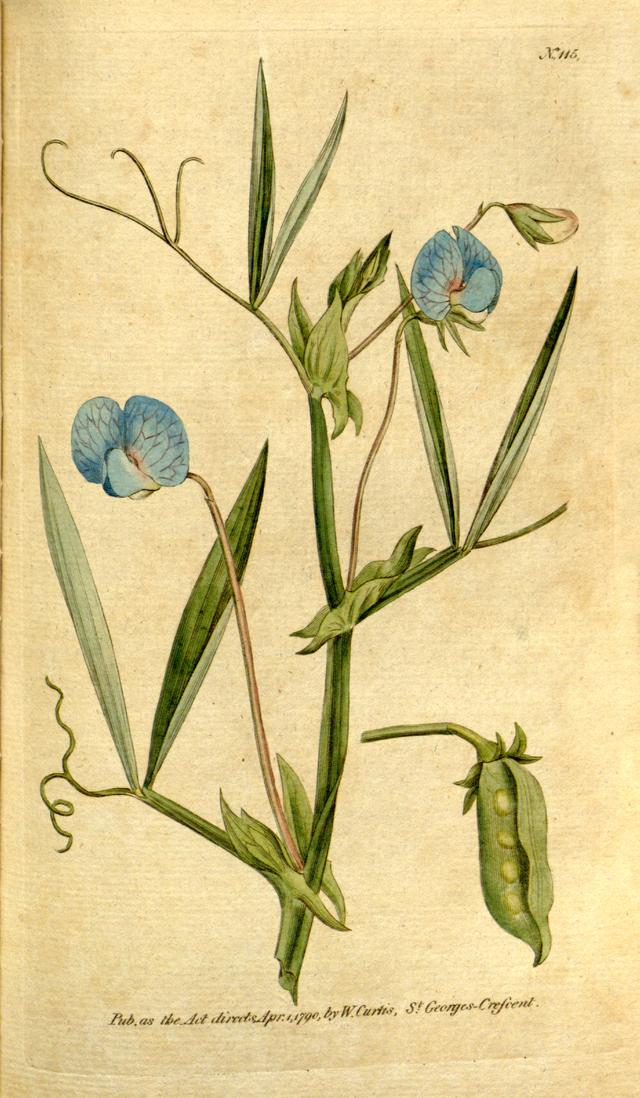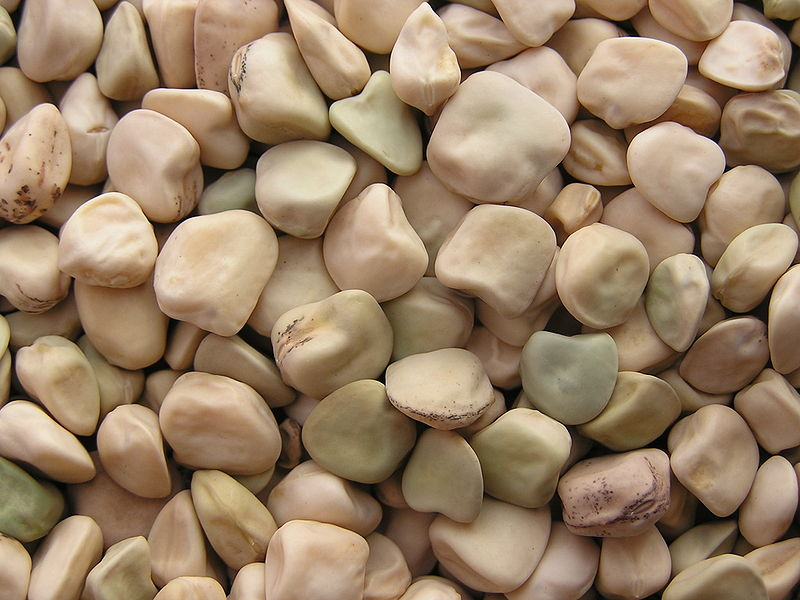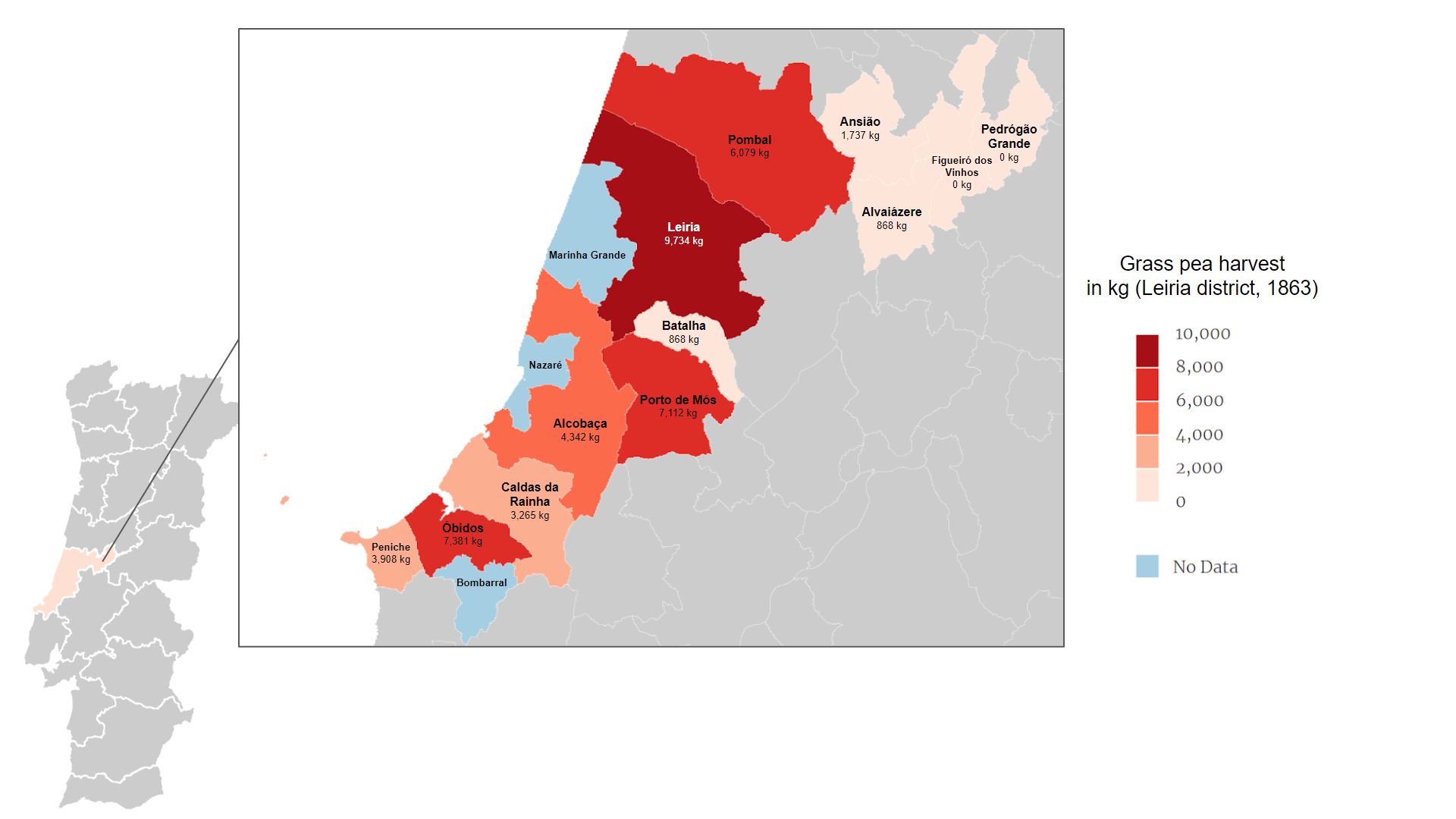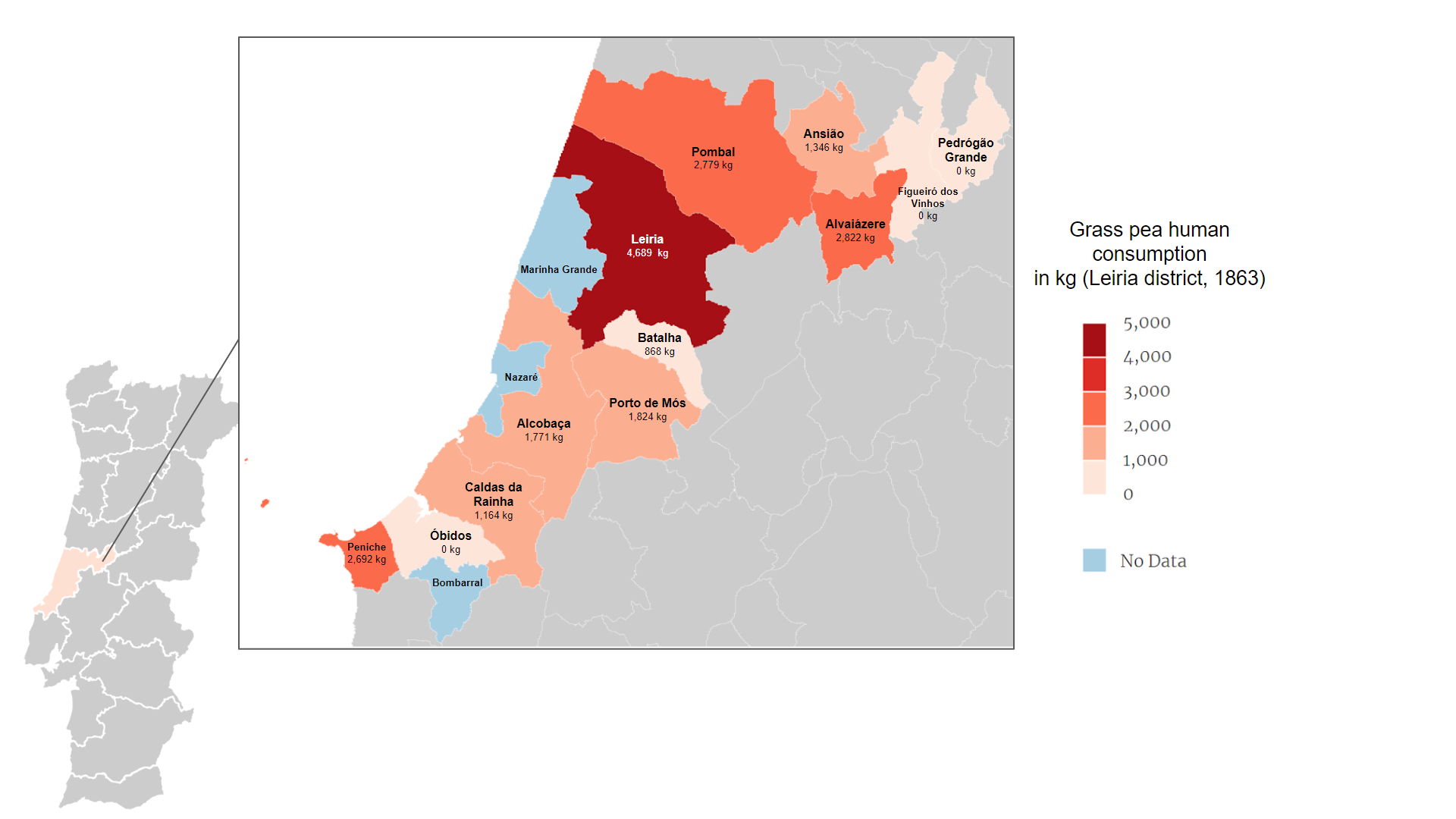
Food, history and cultural heritage: the grass pea consumption in central Portugal (19th century)
In the District of Leiria, central Portugal region, some festivities revive gastronomic and rural traditions, as a way of reclaiming its intangible cultural heritage. Some of these celebrations praise the chícharo, a grain legume consumed mainly by the country’s rural communities: yearly, in October, festivities take place in the municipality of Alvaiázere, so-called the “chícharo capital” since the 1980s; and in November in Santa Catarina da Serra, since 2006. These festivals show a renewed interest in a grain legume that had almost disappeared from the fields and tables in Portugal. What type of plant is this and what is its historical importance in the territory of the district of Leiria?
Known in Portugal as chícharo, the grass pea belongs to the legume family and derives from Lathyrus sativus L., a plant characterized by its ease of growth in diverse environmental conditions. Its structure gives it resistance to infertile soils, adaptation to low and high temperatures, to dry or waterlogged soils and protection against various pests, making its cultivation easier than that of other leguminous plants.
Figure 1. Lathyrus sativus, L. plant. Source: Curtis, William. The Botanical Magazine, Vol. 4, 1791.
This capacity for adaptation has allowed several varieties of this plant to be developed over time in diverse landscapes. Different species of the Genus Lathyrus are found in Europe, Asia, Africa and the Americas. It is accepted that it appeared during the Neolithic and reached the Mediterranean, spreading throughout Europe, from the Balkans. Other authors speculate that the Lathyrus sativus species originated in Asia. In Portugal, the existence of Lathyrus sativus in its territory dates back to the Bronze Age. Today it is widely consumed in India, Ethiopia, Bangladesh and Nepal.
The grass pea seed is composed of high content of protein, fibre, vitamin B, iron, among other elements. The scientific community is also aware of the presence of a chemical component described as β-ODAP acid which is potentially the cause of a neuro disease called lathyrism, which causes paralysis in humans and animals, when accumulated in the body. However, its development is associated with a diet based exclusively on grass pea for periods of 2 to 3 months in a row.
Figure 2. Grass pea. Source: Wikicommons. Autor: Andrew Butko
Consumption in the long term
The period of greatest consumption of pulses in Europe took place during the Middle Ages. Specifically on the cultivation of Lathyrus sativus, L., studies in France and Italy suggest its consumption since the Roman Empire. In Portugal and Spain, it dates back to the 8th and 9th centuries, and along with other non-animal products, was an important part of the cuisine of rural populations, at least until the 20th century, due to the fact that a large part of the population lived in the countryside and was poor. In Spain, the mass consumption of grass pea during the Civil War (1936-1939) demonstrated the state of famine the populations went through at that time, despite being known as a “medium quality pulses“.
The grass pea was a relevant agronomic element in central Portugal, in the second half of the nineteenth century. This grain legume, although it had low numbers of harvest and consumption, in relation to other pulses (like beans, lupin beans and chickpeas), was recognized by farmers as a crop to support other more relevant crops, in a period when there were not chemical fertilizers, being its plant (as well as other legume plants) an element of soil fertilization for the cultivation of olive trees and barley. Agricultural statistics already indicated that part of grass pea production was destined for animal feed too.
Some factors determined the decline in the production of legumes in Portugal, including grass pea, according to some authors: the decrease in the rural population, due to industrialization, migrations to cities and other countries; the invention of chemical fertilizers, which replaced the need for production of legumes for soil improvement; and with the decrease of legume production and improvement of economic power, there was an increase of consumption of animal products.
Grass pea as a cultural heritage
Even in the face of this scenario of declining production of legumes, in the 21st century the grass pea is food and also a cultural heritage in the municipality of Alvaiázere, Leiria district, central Portugal. To achieve this status of local cultural heritage it was necessary to recognize it as a fundamental part of the social dynamics of that zone. In this sense, we sought to understand the process that led to the fact that today grass pea has its “capital”, a small municipality in a rural area of the country. One of the sources for the perception of this process are the agricultural statistics of the Portuguese State organized from the 19th century onwards.
It was found that some municipalities in that region that harvested more grass pea in the period consumed less, and vice versa. The two graphs below show the difference between the harvest and the human consumption of the legume in each municipality in the district of Leiria, in 1863. The difference between the most producing and consuming regions (that are the most urbanised and populated) of this territory and the less populated and rural regions is remarkable. When we compare the graphs, we notice that there is a greater direction of the grass pea just for the animals, in places like Alcobaça, Óbidos and Porto de Mós. On the other hand, in poor or more inland localities the consumption of this grain increases, despite its low production.
When we look at the municipality of Alvaiázere, the “grass pea capital”, although it harvested little compared to the other 11 municipalities analysed (between 1 to 3 tons/year), it was among those who consumed the most. By distributing the consumption per capita, considering the population of 1864, this is confirmed: Alvaiázere consumed more grass pea in the district, in 1864, with 0.4 kg/per capita. The municipality of Leiria, for example, despite being among those which produced the most, did not exceed 0.2 kg/per capita during the same year.
Figure 3. Grass pea harvest in kg (Leiria district, 1863). Made with MapInSeconds.
Figure 4. Grass pea human consumption in kg (Leiria district, 1863). Made with MapInSeconds.
Whether for human or animal consumption or even for new plantations, the grass pea in this period can certainly be recognised as an aid crop to other more relevant ones. Some localities in this territory have enjoyed this food more than others, due to the ease of access allied to the difficulty in accessing other foodstuffs, and this translates into its recognition as cultural heritage. Probably the fact that this grain legume is considered a cultural heritage of Alvaiázere is related to the greater consumption by families, compared to other municipalities in the territory. What could be verified here shows that Alvaiázere consumed more grass pea than any other municipality in the Leiria district, between 1863-1866. It is important to note that this city is located in an area of limestone, which means that the soil is not very fertile for some crops– a fact that favours the production of grass pea, which adapts to this type of soil.
In the past Lathyrus sativus, L. have allowed entire communities to use it in the cultivation of major crops, in addition to animal and human consumption. In the future, this grain legume may be more widely cultivated, as its nutritional properties and resilience to extreme climates have been considered a sustainable alternative for agriculture in the context of climate change, increasingly accelerated by human activities. Therefore, studying chícharo means understanding the past from the perspective of agriculture and cultural heritage, and can also reveal useful data and insights for agriculture in the years to come.
Magda Nascimento is a Master ‘s student in Cultural Heritage and Museology at University of Coimbra (UC). She has a degree in Public Policy and Management at the University of São Paulo (USP, Brazil). With a scholarship from the Portuguese national funding agency for science, research and technology (FCT), she temporarily joined the ReSEED project within the scope of the “Summer with Science 2022” program. Has professional experience with museum heritage management policies and her research lies in museum management tools and audience assessment.





0 Comments